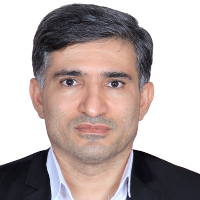Identification of the distribution of development in Afghanistan using the Euclidean TOPSIS technique
One of the first steps towards sustainable development is to establish equality between and within generations. In other words, sustainable development requires improving the welfare of the poor people of the society to reduce inequality. Inequality makes it difficult to achieve development in different ways such as the destruction of capital and social cohesion and the weakening of national security. This is because it prevents political stability. Moreover, inequality has a serious negative effect on the development of society by preventing capital formation and human development. Economic equality has a higher importance in countries with ethnic and religious diversity like Afghanistan. It has a major role in destroying the social cohesion of the society. On the one hand, the incentive for inequality of opportunities increases the interests and benefits of the governing groups, and, on the other hand, inequality is considered immoral and attributed to privileged groups and their rent-seeking. One of the important issues in Afghanistan seems to be the unequal distribution of development among different provinces of the country. Therefore, the first step in planning regional development and achieving more balanced growth and development in Afghanistan is to investigate the current situation of different provinces according to the degree of their development. The present research aims to investigate the difference in the level of development in Afghanistan in 2015 and 2019. Development can be measured based on various criteria such as income, literacy, education, health, physical and communication infrastructure. Thus, the degree of development in Afghanistan's provinces was examined by combining different criteria whose data could be accessed.
This study provided a new methodological instrument to supervise the development process of different areas in Afghanistan. The differences in the development level of 34 provinces of Afghanistan were examined by a three-step approach, including the selection of the development indicators, calculation of the degree of development in the provinces, and analysis of regional changes. Therefore, the TOPSIS technique, which is a ranking method, was used to understand the level of development and their spatial equality. It should be noted that the TOPSIS technique is a practical instrument to select and rank different alternatives. The data about the indicators were collected from the statistics of the World Bank, the United Nations, and the Central Bureau of Statistics and Information of Afghanistan.
According to the results, Kabul Province had the first rank of development in both periods. The development of Kabul decreased in 2019 compared to 2015 and reached 0.5280 from one. The level of development also decreased in other provinces of Afghanistan, except for Kunduz, Herat, and Helmand. The classification of Afghanistan's provinces into developed, developing, and underdeveloped categories indicates that only Kabul is a developed province. Most of the provinces of Afghanistan are in the developing category with a short distance from the underdeveloped ones. The changes in many provinces included in this category are similar to those in Kabul Province, but they cannot improve their conditions or maintain their previous situation. In general, development has not improved in this country considering that the average development of the provinces did not increase in 2019 compared to 2015, and the standard deviation of the country's development did not decrease either. As the gap between the most developed and the least developed provinces increases, the intensity of regional inequality and imbalance increases too.
According to the results, the policies adopted in Afghanistan did not improve the initial unequal conditions; rather, it worsened them. What has been achieved in limited areas has not penetrated to the bottom and has only been intensified through creating divisions in the center-periphery situation. Most of the small material and physical resources are concentrated in Kabul Province, and the severe poverty of the surrounding provinces has been neglected. However, the severe economic inequality between urban and rural areas and the center and periphery is only one example of the inequality that this country is faced with. Inequality can also be proposed and investigated in other areas such as social status and acceptability, power, working conditions, accessibility to job opportunities, and the selection right, which requires further research. To reduce poverty and inequality, it is necessary to pay attention to development programs. In this regard, planning for easier and fairer access to health and treatment facilities and primary education is very helpful. The expansion of educational and health services in poor areas helps to break the cycle of poverty and reduce inequalities by increasing their capabilities.
- حق عضویت دریافتی صرف حمایت از نشریات عضو و نگهداری، تکمیل و توسعه مگیران میشود.
- پرداخت حق اشتراک و دانلود مقالات اجازه بازنشر آن در سایر رسانههای چاپی و دیجیتال را به کاربر نمیدهد.


